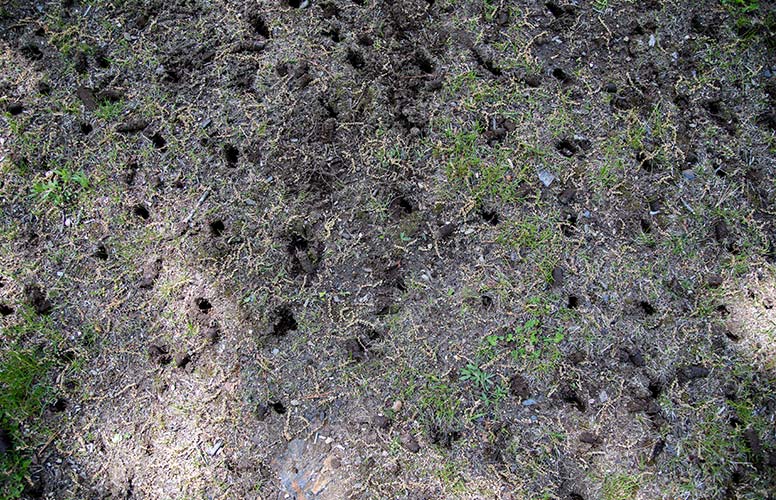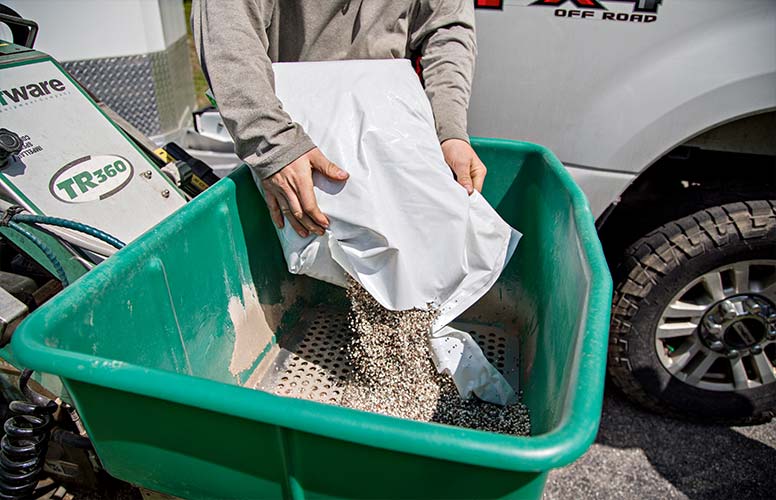4 Types of Retaining Walls & Which One You Need For Your Landscape Project
If you’re planning a major landscaping project, knowing the different types of retaining walls is essential. From gravity and cantilever to sh...
If you’re a Maine homeowner, you may have noticed patches in your lawn that need rejuvenation. You may be wondering about the best way to improve it — aeration and overseeding are two of the most effective ways to get your property looking healthy again!
In this guide, we’ll walk you through precisely when to aerate and seed for successful results, as well as how to determine if your lawn needs pocketing and sowing. We’ll also provide tips on properly aerating and sowing your grass so you can restore its optimal health quickly. Finally, learn why an annual aeration routine is beneficial for keeping your lawn green.
Take some time now to read up on all there is to know about aeration and overseeding — in no time, those sad-looking bare spots will be transformed into lush greenery!
Aeration and overseeding are the most important steps to ensure a healthy and thriving lawn.
Aeration involves perforating the soil with small holes, allowing air, water, and nutrients to penetrate deep into the roots. This process helps to relieve compacted soil and improves the overall health of the grass.

Overseeding, on the other hand, involves spreading fresh grass seed across your lawn to fill any bare or thin areas. Introducing new grass into your property can create a denser, lusher turf that can better resist pests and disease.

Together, aeration and overseeding can help to improve the appearance and health of your lawn, making it more resilient and better able to withstand the rigors of the season. So if you want a property that looks great and stays healthy all year round, consider these two crucial lawn care practices today!
Maintaining a lush and healthy lawn is a year-round task, and one of the critical factors is aeration and seeding. But when is the best time to tackle this urgent task?
The answer depends on a few different factors, including your geographic location, the species of grass in your lawn, and the current weather conditions.
Generally, the best time to aerate and seed your property is during the spring or fall when temperatures are milder, and there’s ample rainfall. This allows the grass seed to establish solid roots and thrive. It’s essential to avoid aerating and seeding during drought or extreme heat, as the grass may struggle to survive.
Proper planning and timing allow your lawn the best chance for vibrant growth and a healthy appearance all year.
Maintaining a healthy lawn requires constant attention and hard work, and one of the crucial tasks is aerating and seeding. Over time, the soil beneath your grass can become compacted, making it difficult for water, air, and nutrients to reach the roots of your plants.
If you notice your lawn has become less green, thin, patchy, or with poor drainage, it might be time to aerate and seed. Additionally, if you’ve recently renovated your lawn or had heavy foot traffic, this can also impact the health of your grass. Aerating and seeding can rejuvenate lackluster Maine properties and create a lush and beautiful landscape for years.
Before you get started with aerating and seeding, you should do a few things to prepare your lawn.
By following these steps, you can achieve a beautiful, green lawn that will be the envy of your neighbors.
Proper follow-up care is crucial for the success of your recent aeration and seeding project. After seeding, it’s essential to keep the soil moist to facilitate germination. You’ll want to ensure the seedlings are not deprived of water.
Irrigation should be done twice daily or preferably whenever there are strong winds to ensure the seeds get enough moisture and nutrients. In addition, avoid mowing the newly seeded area until the grass has reached a height of about three inches.
Most importantly, stay patient. Depending on the grass type, germination could take anywhere from ten days to four weeks. With proper care, your grass will soon sprout and become the lush lawn you have desired.
Aerating and overseeding your lawn can help create a lush, healthy-looking turf from a discolored or thinning patch of grass. You can enjoy a beautiful yard year-round with the proper maintenance and care, and knowing when the best times of year to aerate and seed are essential to achieving optimal results. By following this guide, you’ll have a stunning yard all season long! Looking for aeration or overseeding for your Southern Maine home or business? Greencare can help. Contact us today for a free estimate.